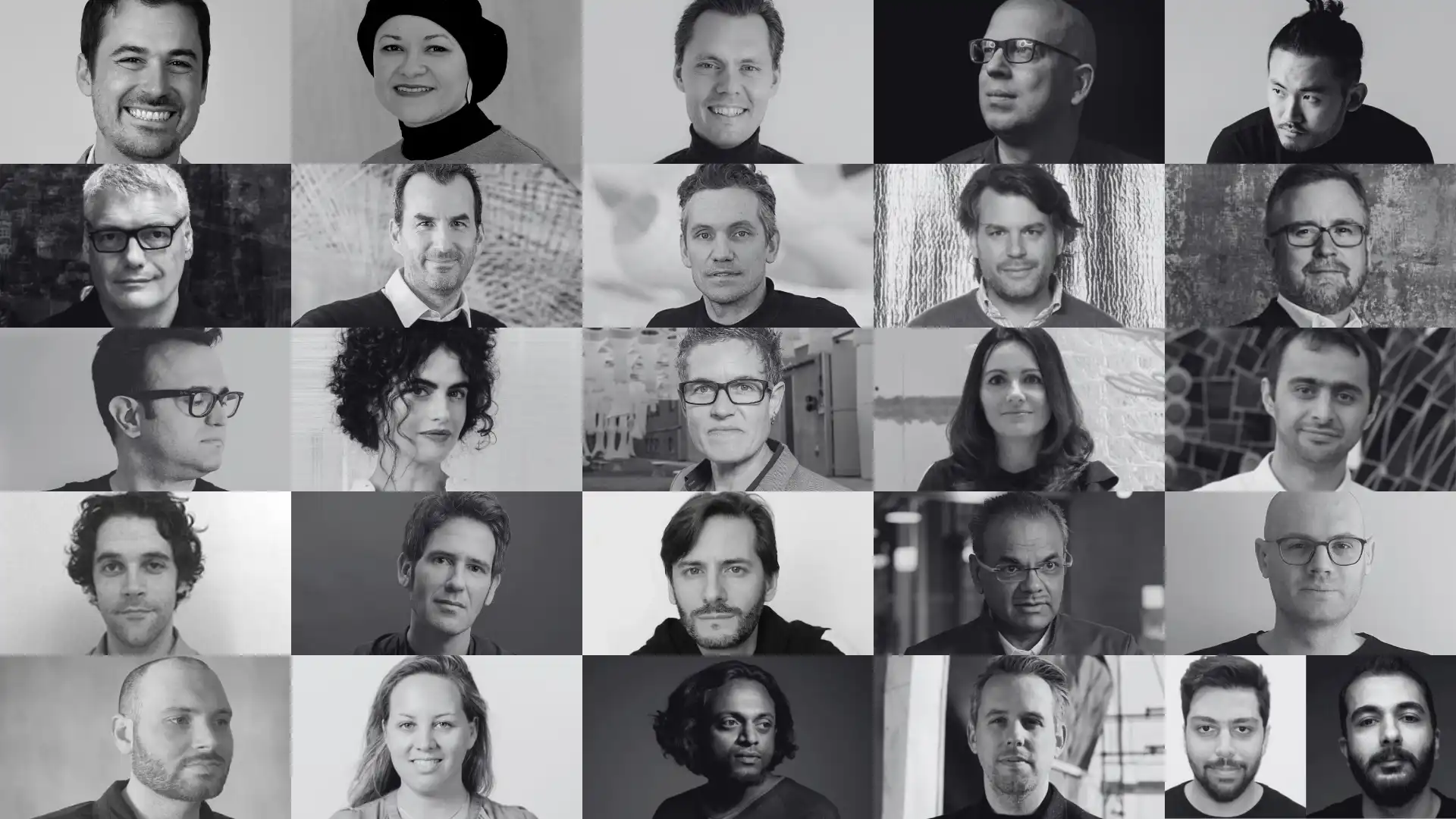
In an age where the boundaries between technology and creativity are increasingly blurred, computational design has emerged as a transformative force across a wide array of disciplines. From the curvature of an architectural façade to the texture of 3D-printed fashion, from climate-responsive buildings to intelligent urban planning, computational design is redefining how we imagine, shape, and interact with the world around us. Once confined to niche digital labs, it is now the common language spoken across architecture, product design, fashion, footwear, engineering, and construction.
Computational design, rooted in algorithmic thinking, data-driven processes, and digital fabrication, enables creators to transcend traditional limitations. With tools like Grasshopper3D, Rhino, Ladybug, Midjourney, and robotic manufacturing systems, designers are no longer restricted by the static rules of form-making. Instead, they work symbiotically with machines and code to explore infinite variations, optimize for performance, and personalize on an unprecedented scale.
.webp)
This new paradigm has not only given rise to unprecedented forms and sustainable systems but has also forged a new generation of multidisciplinary creators. These are individuals who wear many hats: architects with the instincts of data scientists, engineers fluent in design, and artists who sculpt with algorithms. Whether building with biodegradable materials, scripting interactive tools, or deploying AI to generate spaces, their work is shaping the future, both digitally and physically.
In this feature, we honor 25 of the most influential individuals who are leading the way in computational design. These visionaries are not just pushing boundaries, they're redrawing them entirely. Their practices span from elite academic institutions to groundbreaking startups, and their innovations ripple across global design culture. Here are the profiles of the people redefining how we design in the 21st century.
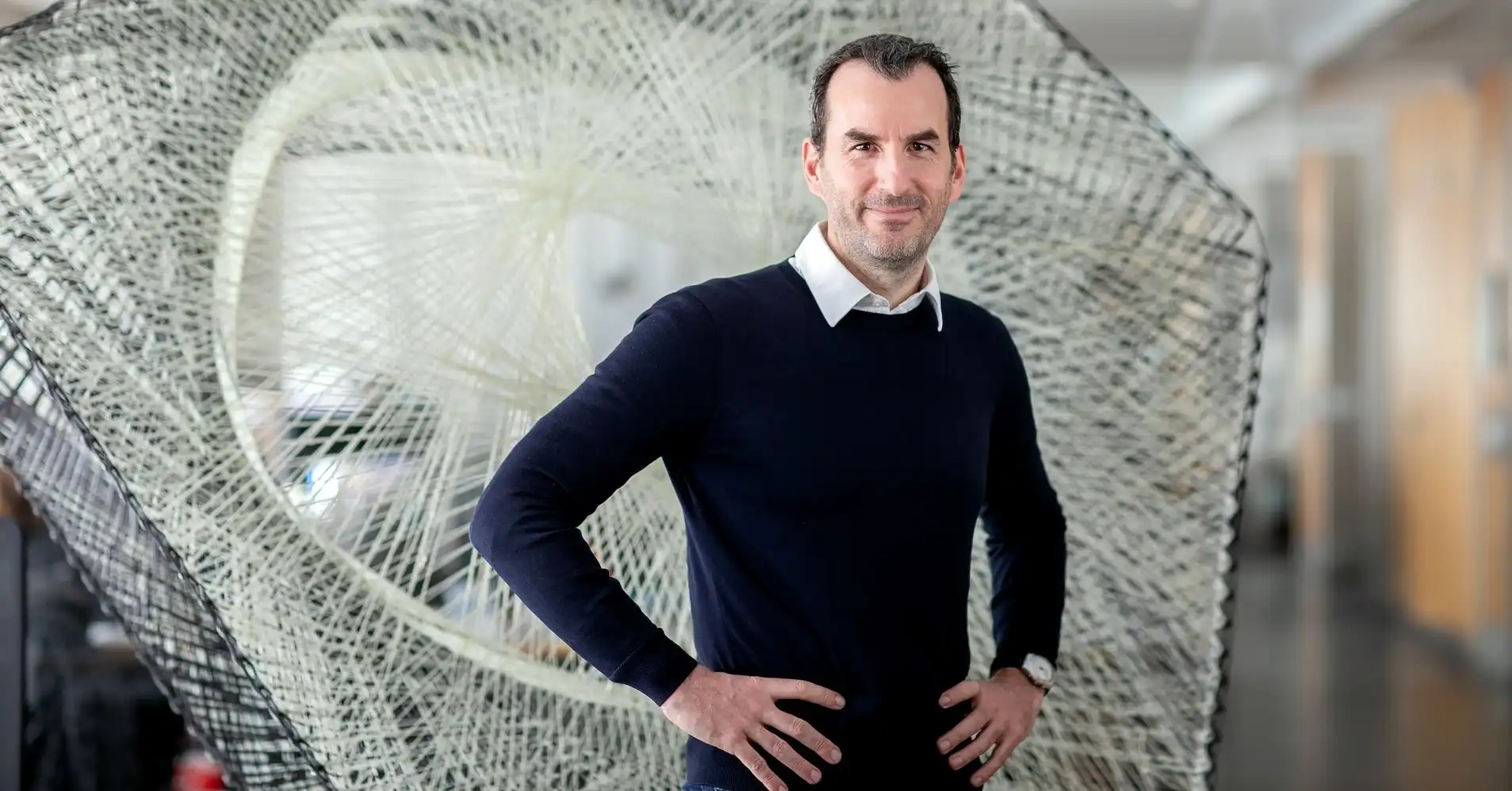
Achim Menges is a German architect and computational designer renowned for his pioneering work in digital fabrication, biomimetic design, and material computation. He directs the Institute for Computational Design and Construction (ICD) at the University of Stuttgart, where he also earned his architectural degree before studying at the Architectural Association in London. Menges’ research explores self-organizing systems and robotic fabrication, resulting in innovative projects like the HygroScope, a climate-responsive wooden structure, and the Elytra Filament Pavilion, a robotically woven carbon-fiber canopy showcased at the V&A Museum in 2016. His interdisciplinary approach integrates architecture, engineering, and biology to create efficient, adaptive structures.

Menges is also a prolific educator and collaborator, co-founding the ICD/ITKE Research Pavilions series, which demonstrates lightweight, bio-inspired construction using computational design and advanced manufacturing. His work has been exhibited globally, including at the Venice Biennale and Centre Pompidou, and has earned him awards like the German Sustainability Award (2020). A visiting professor at Harvard GSD and a fellow of the German Academy of Sciences, Menges advocates for a shift from traditional building methods to material-driven, computational processes, influencing sustainable architecture and inspiring a new generation of designers through his visionary leadership.

Neri Oxman is an American architect, designer, and inventor celebrated for her pioneering work in computational design, material ecology, and bio-inspired fabrication. She earned a degree in architecture from the Technion-Israel Institute of Technology, followed by an M.Arch from the Architectural Association and a PhD from MIT, where she founded the Mediated Matter group in 2010. Oxman’s groundbreaking projects, like the Silk Pavilion, woven by silkworms guided by robotic arms, and Aguahoja, a biodegradable composite responsive to environmental conditions, showcase her vision of harmonizing technology with nature. Her work redefines design by integrating biology, computation, and advanced manufacturing.
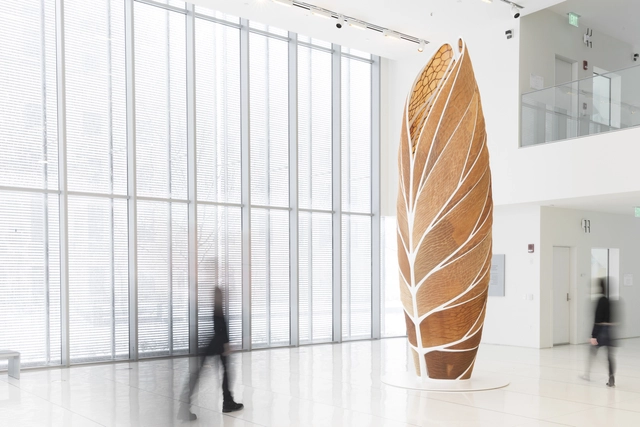
Now leading her New York-based studio, Neri Oxman Studio (formerly OXMAN), since leaving MIT in 2021, she continues to innovate at the intersection of science and art, holding over 20 patents in biofabrication and material systems. Oxman’s creations, exhibited at MoMA, SFMOMA, and the Centre Pompidou, have earned her accolades like the Vilcek Prize (2020) and a place on Fast Company’s Most Creative People list. A TED speaker and advocate for sustainable design, she inspires global audiences with her “Material Ecology” philosophy, pushing boundaries to create structures that grow, adapt, and decompose like living organisms, cementing her legacy as a visionary in computational design.
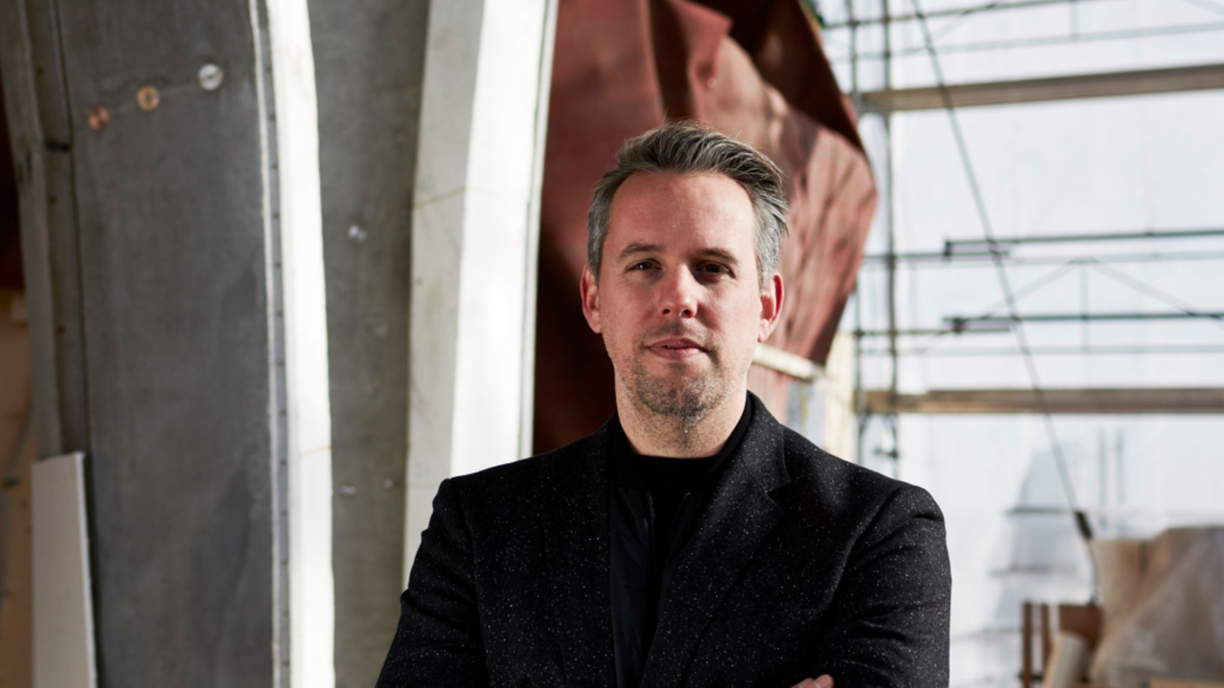
Philippe Block is a Belgian architect and structural engineer renowned for his innovative work in computational design and sustainable construction. He is a Full Professor at ETH Zurich, where he heads the Institute of Technology in Architecture (ITA) and co-leads the Block Research Group (BRG) with Dr. Tom Van Mele. With degrees from the Vrije Universiteit Brussel and a PhD from MIT, Block’s research focuses on computational form-finding, equilibrium analysis, and digital fabrication, specializing in unreinforced masonry vaults and thin concrete shells. His projects, like the Armadillo Vault and Striatus bridge, exemplify his “strength through geometry” philosophy, reducing material use and emissions while reviving historical building techniques with modern technology.

As Director of the Swiss National Centre of Competence in Research (NCCR) in Digital Fabrication, Block drives advancements in bespoke prefabrication and circular construction. His notable works include the 3D-printed KnitCandela shell and the ultra-low-embodied Rippmann Floor System, blending traditional craftsmanship with cutting-edge computation. A co-founder of Foreign Engineering GmbH and VAULTED AG, Block applies his research practically, influencing global sustainability efforts as a Holcim Ltd board member and earning accolades like the Rössler Prize. His interdisciplinary approach continues to reshape architecture by harmonizing structural efficiency, aesthetics, and environmental responsibility. We hosted Philippe Block in a recent PA Talks interview. Make sure to check it out as he shares incredible insights on computational design and the innovations they do at BRG of ETH Zurich.
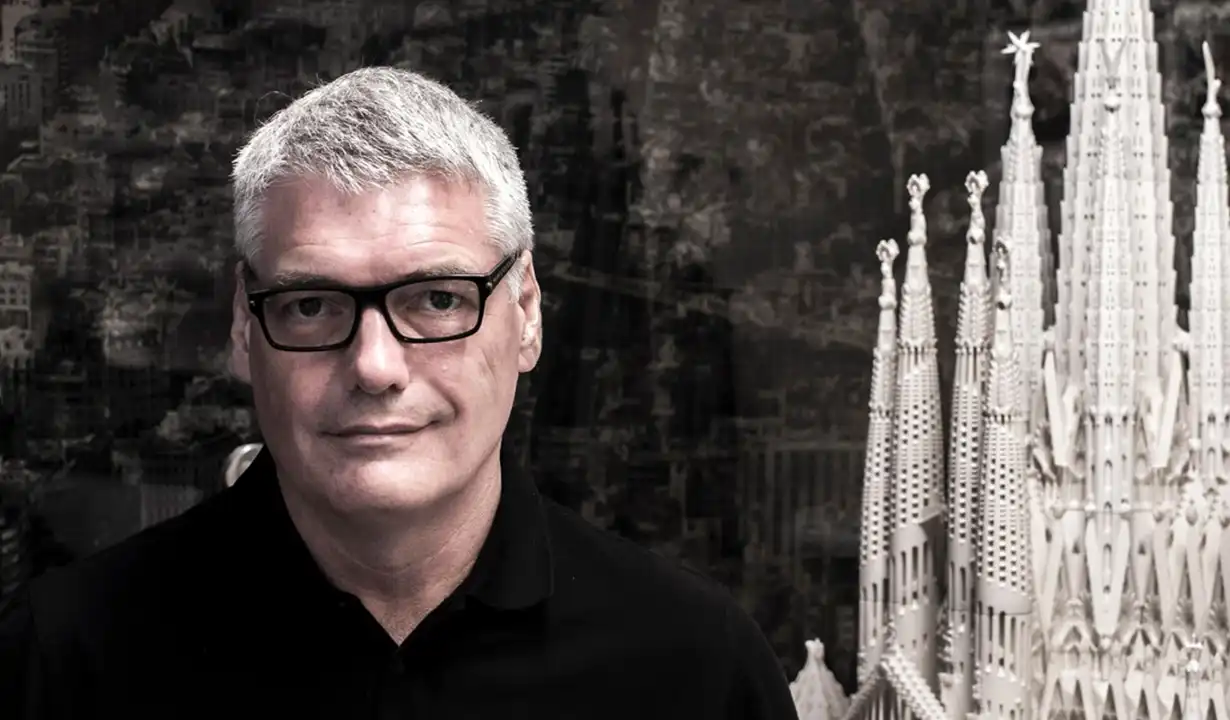
Mark Burry is a New Zealand-born architect and computational designer who is celebrated for his pioneering role in digital architecture and parametric design. He is best known for his 30-year contribution to Antoni Gaudí’s unfinished Sagrada Família in Barcelona, where he served as Executive Architect and Researcher from 1979 to 2016, translating Gaudí’s complex geometries into buildable forms using computational tools. With a Bachelor of Architecture from the University of Auckland and advanced studies at Cambridge, Burry founded the Spatial Information Architecture Laboratory (SIAL) at RMIT University in Melbourne, where he also served as Professor of Innovation, advancing research in digital fabrication and design computation.
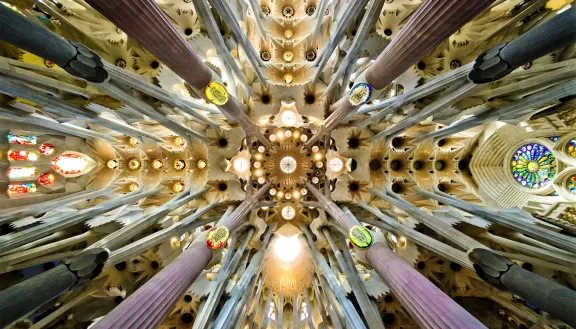
Burry’s work bridges historical architecture with modern technology, as seen in projects like the Gaudí Drawn software and his consultancy, Smartgeometry Group, co-founded in 2001 to promote generative design. His influence extends through books like Scripting Cultures (2011) and exhibitions at the Venice Biennale, earning him accolades such as the Australian Creative Fellowship (2006-2011) and an Order of Australia (AO) in 2018. A frequent lecturer and collaborator with firms like Gehry Partners, Burry’s legacy lies in demonstrating how computational methods can unlock architectural complexity, inspiring a global shift toward digital craftsmanship and innovative design thinking.
_d67d06.webp)
Formerly a lead architect at Zaha Hadid Architects, the Iranian architect Arian Hakimi specializes in performance-based design and generative systems, advancing computational strategies in both academia and practice. He is the founder of Arian Hakimi Architects and leads a studio focused on architecture, urbanism, and systematic design.
_d67d06.webp)
His contributions to multiple projects at ZHA, such as Unicorn Island and KAFD, have made him an icon in the world of computational and parametric design. He has lectured on parametric design, tutored over 17 international workshops, including at PAACADEMY, and shared his insights on platforms like PA Talks.
.webp)
Jenny Sabin is an American architect and computational designer renowned for her innovative work at the intersection of architecture, biology, and advanced fabrication. She directs Jenny Sabin Studio in Ithaca, New York, and is the Arthur L. and Isabel B. Wiesenberger Professor at Cornell University’s College of Architecture, Art, and Planning. With a BFA and M.Arch from the University of Pennsylvania, Sabin’s research explores adaptive, bio-inspired design, resulting in projects like PolyThread, a lightweight knitted pavilion for MoMA PS1 (2016), and Lumen, a responsive canopy that won the 2017 Young Architects Program. Her work leverages computational tools to create structures that mimic natural systems, blending aesthetics with functionality.
.webp)
Sabin’s interdisciplinary approach integrates data-driven design with material science, as seen in collaborations like the Ada project with Microsoft, which used AI to craft responsive environments. A co-founder of LabStudio with biologist Peter Lloyd Jones, she bridges architecture and cellular biology, influencing projects exhibited at the Venice Biennale, SFMOMA, and Cooper Hewitt. Recognized with awards like the Pew Fellowship (2010) and Architectural League Prize (2014), Sabin lectures globally and pushes the boundaries of digital fabrication, advocating for sustainable, human-centric design that adapts to environmental and social contexts, solidifying her impact in computational architecture.
_d67d06.webp)
Carlos Bañón is a Spanish architect and computational designer who has significantly influenced the field through his integration of artificial intelligence and advanced manufacturing into architecture. As an Associate Professor with tenure at the Singapore University of Technology and Design (SUTD), he founded the Architectural Intelligence Research Lab (AirLab) in 2015, where he explores innovative design workflows using parametric modeling, 3D printing, and AI-driven tools like Midjourney and Stable Diffusion. His notable projects, such as the AirMesh Pavilion, Singapore’s President’s Design Award winner in 2020, demonstrate his commitment to resource-efficient, lightweight structures, blending cutting-edge technology with sustainable design principles.
_d67d06.webp)
Bañón’s career also spans professional practice and education, with a portfolio that includes co-founding Subarquitectura Architects in Spain and authoring the book 3D Printing Architecture: Workflows, Applications, and Trends with Felix Raspall. His work has been showcased at prestigious venues like the Venice Biennale and the London Design Museum, where he received the Design of the Year Prize. A frequent lecturer at institutions like MIT and EPFL, Bañón champions a future where AI amplifies human creativity, as seen in his workshops at PAACADEMY and his designs like the DB Schenker Upcycling Hub, which earned the Gold A’ Design Award in 2023, reflecting his vision for a digitally enhanced, sustainable built environment.

Hanaa Dahy is an Egyptian architect, engineer, and computational designer known for her pioneering work in sustainable architecture and bio-based materials. With a PhD from the University of Stuttgart and degrees in Architectural Engineering from Ain Shams University in Cairo, she founded the BioMat (Bio-based Materials and Materials Cycles in Architecture) research group at Stuttgart’s ITKE in 2016 and later established BioMat@Copenhagen at Aalborg University in 2022. Dahy’s innovative design philosophy, “Materials as a Design Tool,” integrates parametric computational design and digital fabrication with renewable resources like flax and straw, leading to groundbreaking projects such as the 2018 BioMat Pavilion, a parametrically designed biocomposite shell spanning 10 meters.

Beyond her academic and research roles, Dahy is a registered architect and CEO of BioMat TGU at TTI GmbH, holding multiple international patents in sustainable building solutions. Her work, which includes digitally fabricated structures like the Fibrx Rocking Chair and mycelium-based modular systems, has earned her accolades, such as the Materialica Design + Technology Award (2015) and the Soane Medal (2024). A frequent lecturer and exhibitor at global venues like the Venice Biennale, Dahy bridges computation, ecology, and architecture, advocating for a future where technology and local biomaterials redefine sustainable construction practices.
_d67d06.webp)
Arturo Tedeschi is an Italian architect and computational designer who is celebrated for his innovative work in parametric design and algorithmic modeling. With a degree in Architecture from the University of Rome La Sapienza, he founded his eponymous studio in 2011, focusing on integrating advanced computation into architecture, product design, and education. Tedeschi gained international recognition through projects like the Aortic Arc pavilion and his collaborations with brands like Adidas and Ross Lovegrove, showcasing his ability to craft intricate, organic forms using tools like Grasshopper and Rhino. His books, Parametric Architecture with Grasshopper and mainly AAD Algorithms-Aided Design, remain crucial resources for designers worldwide.
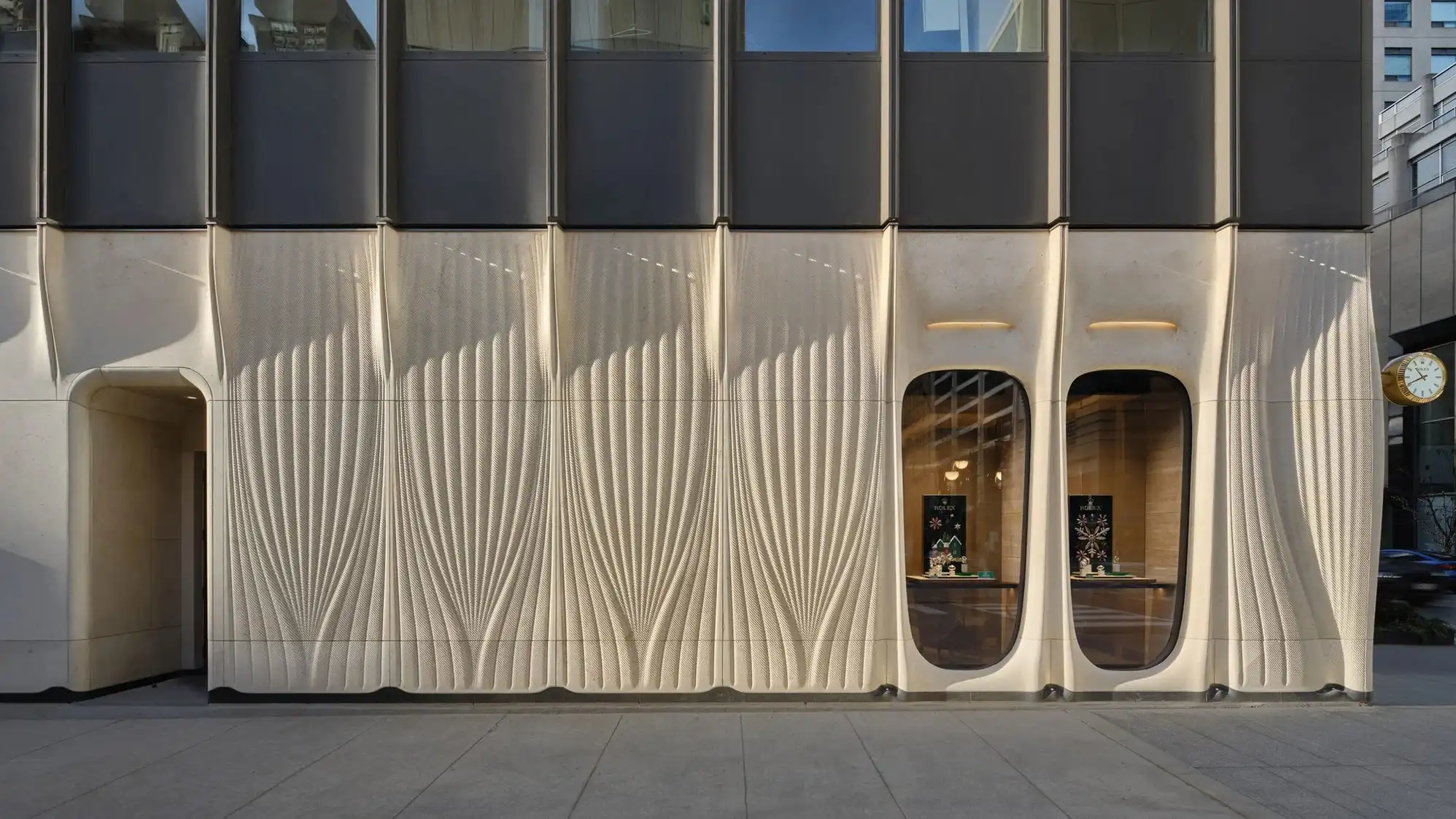
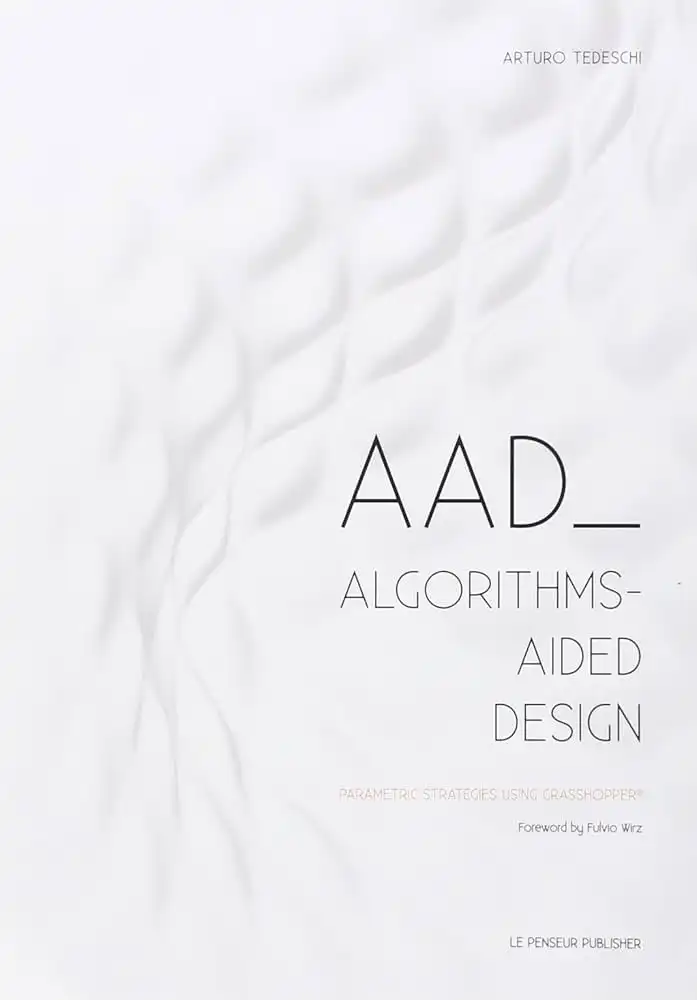
Beyond his design practice, Tedeschi is a passionate educator and thought leader, having taught workshops at PAACADEMY and courses across Europe, the US, and Asia, including at institutions like the Bartlett UCL and IUAV Venice. He consults for leading firms like Zaha Hadid Architects and Foster + Partners, applying his expertise in generative design and digital fabrication to real-world projects. His work exhibited at venues like the Venice Biennale and Rome’s MAXXI Museum, reflects a seamless blend of aesthetics, technology, and functionality, earning him accolades such as the Italian Design Award in 2020 and solidifying his influence in the computational design community.

Computational designer and the creator of the Pufferfish plugin for Grasshopper3D, Michael Pryor, is known for his work on morphing geometries and generative systems. Being a co-host at Computational Design: NEXT conference series alongside Hamid Hassanzadeh (founder of PAACADEMY), he contributes extensively to the computational design community through education and tutorials.

Michael Pryor is also the co-founder of DesignMorphine, where he serves as Chief Design Officer. With a B.Arch from the New York Institute of Technology, Michael worked in companies such as Trahan Architects and NIKE. He currently holds the role of Head of Procedural Generation at Wilder World. His expertise spans parametric design, procedural modeling, and advanced tools like Rhino, Grasshopper3D, and Houdini, making him a key figure in bridging technology and creative design.
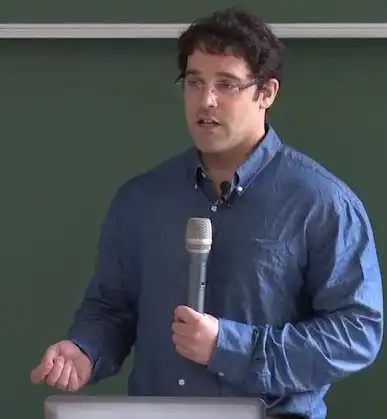
Daniel Piker is a British computational designer and architect renowned for creating Kangaroo Physics, a widely acclaimed Grasshopper plugin for real-time physics simulations and form-finding in architectural design. With a background in architecture from the Architectural Association in London, Piker developed Kangaroo in 2010 during his tenure at the Advanced Geometry Unit at Arup, where he explored structural optimization and dynamic modeling. His work bridges geometry, physics, and computation, enabling designers to simulate complex behaviors like tension, bending, and gravity, revolutionizing interactive design processes in architecture and engineering.

Piker’s contributions extend beyond Kangaroo, as he has worked as a computational design researcher with firms like Foster + Partners Specialist Modelling Group and taught workshops globally on parametric design and simulation. Now based in London, he continues to refine Kangaroo, which is now in its third iteration, while developing other tools like K2Engineering, focusing on lightweight structures and material efficiency. His research, shared through publications and platforms like Vimeo, has earned him a dedicated following, with Kangaroo celebrated at events like the Venice Biennale for its impact on digital fabrication and generative design, cementing Piker’s status as a pioneer in computational architecture.

Esmaeil Mottaghi is an Iranian computational designer and researcher based in Vancouver, Canada, renowned for co-founding Parakeet, a widely used Grasshopper plugin for algorithmic pattern generation. With a Master’s in Computational Design from the University of Tehran, Mottaghi brings a deep understanding of digital fabrication and design workflows to his work. His career includes extensive experience as a tutor and director of workshops at institutions like Tehran University, where he has advanced the integration of computational tools in architecture. Alongside his role as co-founder of Paragen Creative Studio, he contributes to innovative design solutions, blending academic rigor with practical applications in pattern morphogenesis and fabrication.

Arman KhalilBeigi is a digital architect and computational designer who co-developed Parakeet with Mottaghi, enhancing Grasshopper’s capabilities for generating geometric and natural patterns. A PhD candidate at the University of Calgary, KhalilBeigi has been teaching design computation, data-driven design, and digital fabrication since 2016 at prestigious universities like the University of Tehran. As co-founder of Paragen Creative Studio, he provides algorithmic solutions and design rationalization services globally. His research and practice, including publications like “Parakeet3D: Algorithmic Re-Envisioning of Geometrical Pattern Morphogenesis,” reflect his passion for merging computer science, material technologies, and architectural innovation.
.webp)
Mostapha Sadeghipour Roudsari is an Iranian computational designer and building performance analyst who founded Ladybug Tools, a suite of open-source plugins revolutionizing environmental analysis in architecture. With a Master’s in Architectural Technology from the University of Tehran and a PhD from Penn State, where he focused on building simulation, Roudsari developed Ladybug in 2013 to integrate daylight, energy, and thermal analysis into Grasshopper workflows. His tools, including Ladybug, Honeybee, and Butterfly, empower designers to optimize sustainability and performance early in the design process, earning widespread adoption in academia and practice globally.

Roudsari’s career blends research, teaching, and software development, with roles at firms like Thornton Tomasetti and teaching stints at Penn State and the University of Pennsylvania. Now based in Australia as an Associate Director at Introba, he continues to advance Ladybug Tools, fostering a community-driven approach to sustainable design. His work has been recognized with awards like the 2018 IBPSA-USA Emerging Contributor Award, and his lectures at venues like SimAUD and BEMNext reflect his influence. Roudsari’s vision bridges computation with ecological responsibility, making him a pivotal figure in performance-driven architecture.
.webp)
Mateusz Zwierzycki is a Polish architect and computational designer renowned for his contributions to parametric design and digital fabrication. He graduated with an M.Arch from the Poznań University of Arts in 2012 and later founded Object, a consultancy focused on parametric modeling, design workflows, and machine learning. Zwierzycki’s work emphasizes generative algorithms and architectural geometry, with notable projects like The Means, a robotically fabricated column that showcases advanced computational methods. His tenure as a research assistant at CITA in Copenhagen and BTU Cottbus further honed his expertise in integrating AI and robotics into design processes.

Beyond his design practice, Zwierzycki is a prolific developer and educator, having created popular Grasshopper plugins such as Human UI, Anemone, Starling, Squid, and Owl, which are widely used in the computational design community. He has tutored numerous international workshops across countries like Poland, Spain, and the USA, promoting innovative design thinking. Collaborations with firms like Zieta Prozessdesign and Joris Laarman Lab highlight his ability to apply digital modeling and simulation to real-world projects. Zwierzycki’s influence extends through his role as a co-founder of Poland’s first parametric design website, cementing his status as a key figure in advancing computational architecture.
.webp)
Nate Miller is the founder and CEO of Proving Ground, a consultancy launched in 2015 that empowers the architecture, engineering, and construction (AEC) industry with data-driven design solutions. With a B.Arch from the University of Nebraska-Lincoln, Miller honed his expertise in computational design during his time as an Associate Partner at CASE and through collaborations with leading firms like NBBJ and HDR. His work focuses on leveraging tools like BIM, parametric modeling, and custom software to enhance project performance, evidenced by his contributions to high-profile projects such as stadiums, skyscrapers, and hospitals. A respected thought leader, Miller has spoken at venues like ACADIA, AIA TAP, and USC BIM Symposium, sharing insights on integrating technology into design workflows.

Miller is also a prolific innovator, having authored widely used open-source tools like LunchBox, Rhynamo, and Slingshot for Grasshopper and Dynamo, which boost designer productivity in the AEC community. Through Proving Ground, he advises top-tier organizations, offering strategic plans, custom tools, and workshops that bridge the gap between data and practical application. His blog, TheProvingGround.org, started in 2007, remains a vital resource for computational design enthusiasts, reflecting his commitment to education and innovation. Miller’s vision continues to shape a future where technology amplifies creativity and efficiency in building design, making him a pivotal figure in the evolution of digital architecture.
.webp)
Jesper Wallgren is a Swedish architect and co-founder of Finch3D, a tech firm he established with Pamela Nunez Wallgren to revolutionize architectural design through artificial intelligence and computational tools. Initially trained as an architect, Wallgren transitioned into a tech innovator, serving as Chief Product Officer (CPO) at Finch3D, where he develops algorithms and oversees the platform’s growth. His journey began with creating parametric design solutions in Grasshopper to streamline workflows at his own architecture firm, and his viral social media videos showcasing these innovations sparked widespread interest, laying the foundation for Finch3D’s mission to enhance early-stage design processes.
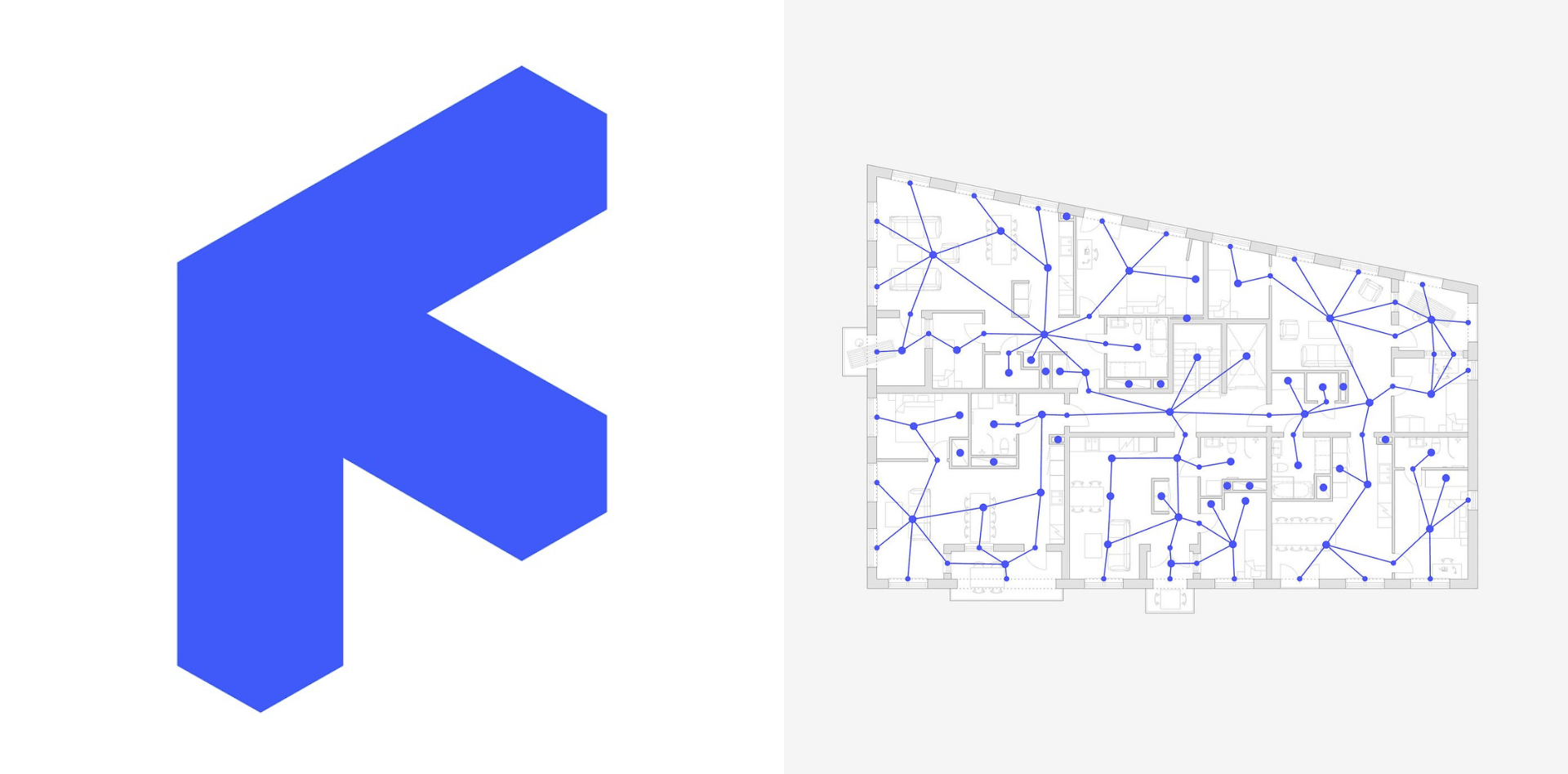
At Finch3D, Wallgren drives the integration of AI and graph technology to automate repetitive tasks like floor plan generation, enabling architects to focus on creativity and decision-making. His work emphasizes collaboration between human intuition and machine precision, as seen in Finch3D’s evolution from a Rhino plugin to a standalone platform with seamless connections to tools like Revit and Grasshopper. A thought leader in the AEC industry, Wallgren shares his insights through lectures, workshops, and platforms like PA Talks. He advocates for a future where technology amplifies architectural innovation while addressing sustainability and efficiency in building design.

A leader in digital fabrication and eco-parametric design, Arthur Mamou-Mani is a French architect and computational designer known for his innovative approach to digital fabrication and parametric design. Born in Paris in 1983, he studied at the École Nationale Supérieure d'Architecture de Paris-Malaquais and the Architectural Association in London before founding Mamou-Mani Architects in 2011. His practice focuses on creating eco-friendly, digitally crafted structures, blending technology with sustainability. A former lecturer at the University of Westminster, Mamou-Mani gained global recognition for designing Galaxia, the 2018 Burning Man Temple, a spiraling wooden structure symbolizing cosmic unity, marking him as the first non-US architect selected for this iconic commission. Check out our PA Talks episode #68 for an exclusive office tour and interview with Arthur Mamou-Mani.
_d67d06.webp)
Mamou-Mani’s work extends beyond architecture into experimental installations and education, emphasizing nature-inspired design and advanced manufacturing. Projects like Conifera, a 3D-printed bioplastic installation for COS at Milan Design Week 2019, and Sandwaves, a sand-printed urban furniture piece in Saudi Arabia, showcase his commitment to sustainable materials and computational processes. Through his digital fabrication lab, FabPub, and collaborations with brands like Therme Group, he explores robotics, AI, and circular design, earning accolades such as the RIBA Rising Star Award and the Pierre Cardin Prize. His vision reimagines architecture as a dynamic, technology-driven art form that harmonizes with the environment.
.webp)
Marc Fornes is a French architect and computational designer who founded THEVERYMANY, a New York-based studio, in 2004. With a background in architecture from École Nationale Supérieure d'Architecture de Paris-La Villette, Fornes is renowned for his pioneering work in computational design and digital fabrication, mainly through his invention of "Structural Stripes." This innovative building system transforms complex, curvilinear surfaces into self-supporting structures using thousands of custom-designed, flat components, seamlessly blending art and architecture. His tenure at Zaha Hadid Architects, where he led material and geometric research for an experimental carbon-fiber shell, laid the groundwork for his distinctive approach.
.webp)
At THEVERYMANY, Fornes has created a portfolio of large-scale, organic installations like Under Magnitude in Orlando and Pillars of Dreams in North Carolina, which unify structure, skin, and spatial experience. His work, rooted in parametric design and advanced manufacturing, has been acquired by prestigious institutions such as the Centre Pompidou and the FRAC Centre and showcased at the Venice Biennale and Guggenheim. A TED Fellow and frequent lecturer, Fornes bridges academia and practice, pushing the boundaries of how computation can redefine architectural form and public interaction, earning accolades like the Architectural League Prize and the A+ Award.

Michael Hansmeyer is a Swiss computational designer and architect who is celebrated for his groundbreaking work in algorithmic architecture and digital fabrication. With degrees in mathematics from ETH Zurich and architecture from Columbia University, he blends rigorous computation with artistic exploration, creating highly detailed, otherworldly structures. His iconic projects, like the Subdivided Columns and the Grotto installation, use custom algorithms to generate intricate geometries that push the limits of traditional design and manufacturing, often realized through advanced techniques like 3D printing and laser cutting. Hansmeyer’s tenure at Herzog & de Meuron and CAAD at ETH Zurich shaped his approach to merging precision with imagination.
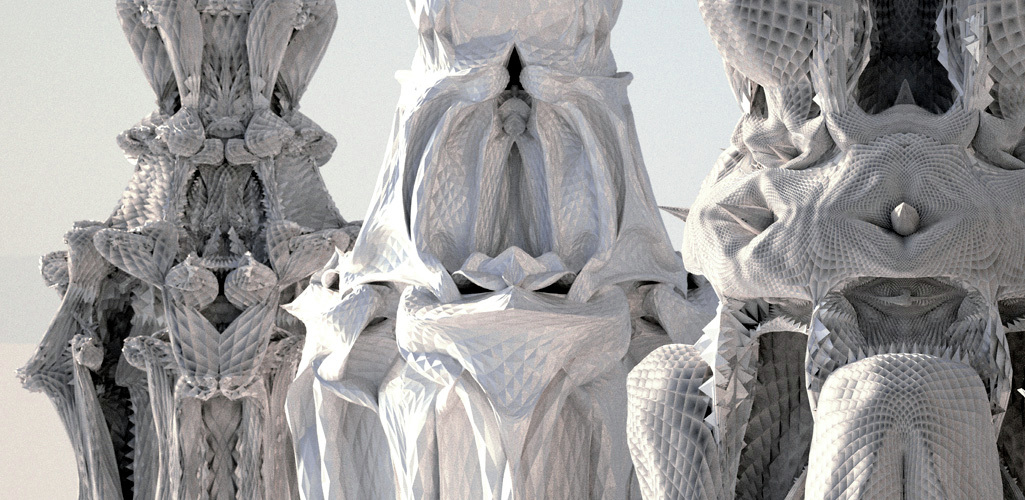
Hansmeyer’s work challenges conventional notions of form, focusing on emergent complexity and the aesthetic potential of computational processes. His installations, such as the Arabesque Wall and Digital Grotesque II, co-created with Benjamin Dillenburger, feature millions of unique elements, showcasing the power of algorithms to produce architecture at an unprecedented scale and resolution. Exhibited globally at venues like the Venice Biennale and the FRAC Centre, his designs provoke wonder and debate, emphasizing beauty over utility. Hansmeyer continues to lecture and collaborate worldwide, inspiring a new generation to explore the infinite possibilities of digital design.
_d67d06.webp)
Alisa Andrasek is a visionary computational designer and architect renowned for her work at the intersection of design, technology, and science. She founded Biothing in 2001, a pioneering design laboratory that harnesses generative algorithms and computational systems to explore innovative architectural forms. With a Master’s in Advanced Architectural Design from Columbia University, Andrasek has held influential academic roles, including Professor of Design Innovation at RMIT University and Director of Wonderlab at UCL’s Bartlett School of Architecture. Her projects, such as the Turing Pavilion and XenoCells, leverage AI, robotics, and high-resolution fabrication to create complex, nature-inspired structures, redefining the possibilities of architectural synthesis.

Andrasek’s career bridges practice and research, emphasizing the fusion of human creativity with exponential technologies. As co-founder of AI Build and a partner in Bloom Games, highlighted by the interactive Bloom installation at the 2012 London Olympics, she pushes the boundaries of computational design for urban and ecological applications. Her work, which she has exhibited at prestigious venues like the Centre Pompidou and the Venice Biennale, reflects a commitment to sustainability and complexity, using big data and simulations to address pressing challenges like climate change. Andrasek’s influence extends globally, shaping the future of architecture through her innovative methodologies and thought leadership.
_d67d06.webp)
Andrew Kudless is an acclaimed architect and designer, founding MatsysDesign in 2004 to explore the intersection of computation, material systems, and innovative fabrication. With a B.Arch from Tulane University and an M.Arch from the Architectural Association’s Emergent Technologies and Design program, Kudless pioneers bio-inspired and parametric design, drawing from natural processes to create intricate, performative structures. His notable works, like the cellular P_Wall and the lightweight Chrysalis pavilion, demonstrate his expertise in digital crafting and material experimentation, earning him recognition in exhibitions at MoMA, SFMOMA, and the Centre Pompidou.
_d67d06.webp)
Based in Oakland, California, Kudless also serves as a Professor at the California College of the Arts (CCA), where he inspires students with his research into generative design and advanced manufacturing. His MatsysDesign projects, such as the responsive Seed installation and the award-winning Sway’d lighting system, reflect a commitment to sustainability and adaptability, blending art and architecture. A frequent lecturer and workshop leader, Kudless has shaped contemporary design discourse, with his work celebrated for its fusion of technology, ecology, and aesthetic innovation.
.webp)
A rising star in the AI architecture space, Tim Fu is an innovative architectural designer and the founder of Studio Tim Fu (STF), a London-based practice established in 2023 after his tenure at Zaha Hadid Architects. With a B.Arch from Ryerson University and an M.Arch from the Architectural Association, Fu specializes in advanced computation and artificial intelligence, integrating AI-driven tools like Midjourney and parametric design into architecture. His work, including the pioneering Lake Bled Estate in Slovenia, showcases his vision of merging human creativity with machine intelligence, redefining traditional design processes with projects emphasizing bold geometries and sustainable solutions.
.webp)
At STF, Fu leads a team focused on pushing the boundaries of architectural practice in the AI era, advocating for technology as a partner to amplify human ingenuity. His notable contributions include developing the Grasshopper plugin Pufferfish and spearheading the world’s first fully AI-driven architectural project at Lake Bled, blending Slovenian heritage with cutting-edge design. A prominent educator, Fu has conducted workshops at institutions like Harvard GSD and PAACADEMY, and his AI explorations have been featured globally, from Bloomberg to the Venice Biennale, cementing his reputation as a leader in computational design.

Shajay Bhooshan is an Associate Director at Zaha Hadid Architects (ZHA), where he has been a pivotal figure since joining in 2007. He co-founded and heads ZHACODE, the firm’s computational design research group, driving innovation in parametric design, digital fabrication, and advanced manufacturing. With a B.Arch from Indraprastha Open University in India and an M.Arch from the Architectural Association’s Design Research Laboratory in London, Bhooshan blends theoretical expertise with practical application. His work explores the intersection of architecture, geometry, and technology, notably contributing to projects that leverage robotics and algorithmic design to push architectural boundaries.

Beyond his role at ZHA, Bhooshan is a dedicated educator and researcher, pursuing a PhD at ETH Zurich’s Block Research Group, where he focuses on structure and fabrication-aware architectural geometry. He has taught at the AA DRL Master’s program and presented at global conferences, sharing insights on computational design and its impact on the built environment. His contributions include high-profile projects like the 3D-printed Striatus bridge, showcasing sustainable construction methods, and installations like Thallus, which highlight his expertise in merging creativity with cutting-edge technology, cementing his influence in contemporary architecture.
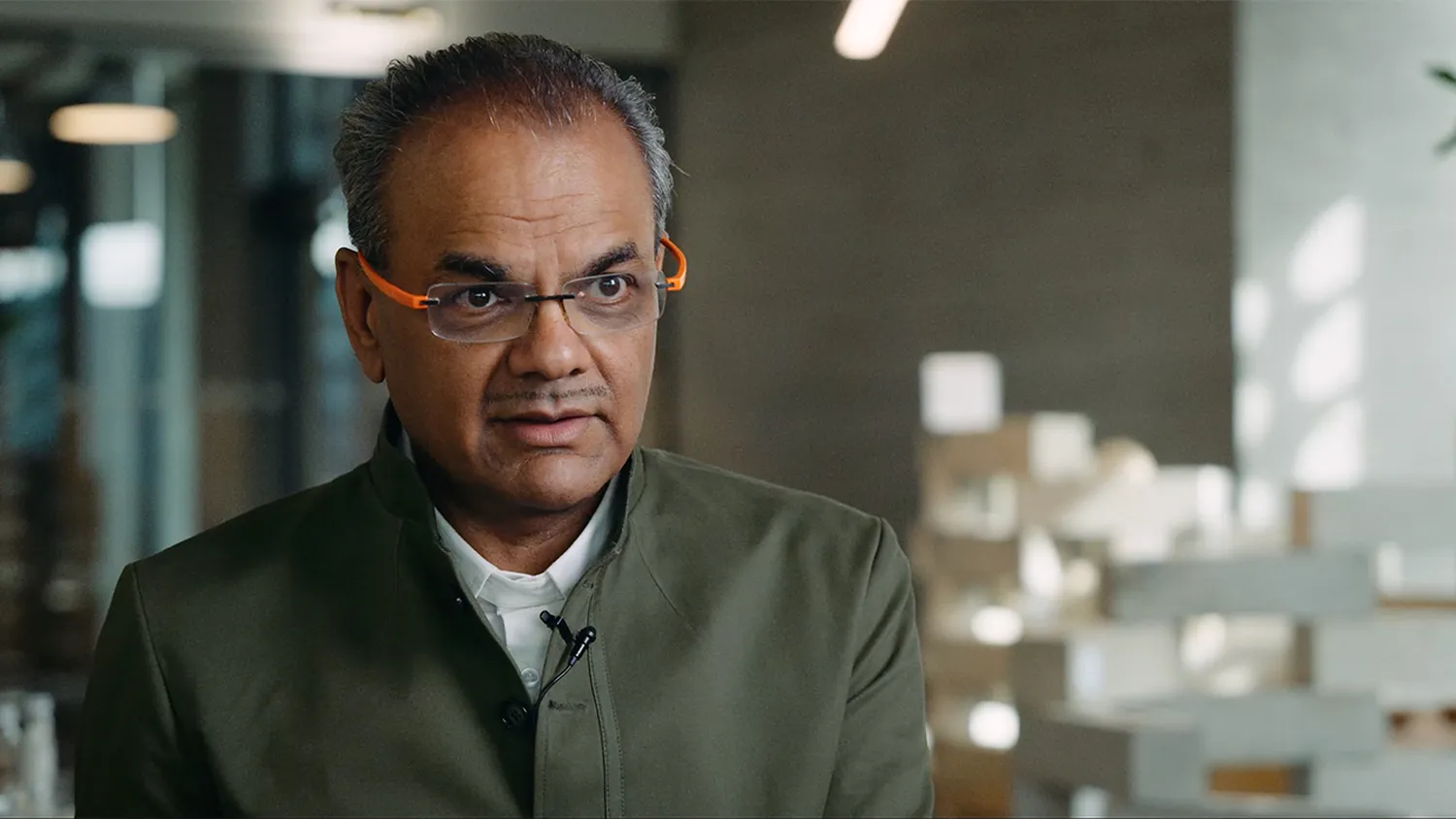
A structural engineer and co-founder of AKT II, Kara has worked on some of the world’s most innovative parametric projects, promoting the integration of computation in engineering. Since 1996, he is known for collaborating with architects like Zaha Hadid and Norman Foster. Born in Uganda and a UK refugee in the 1970s, he has led over 350 award-winning projects, including four RIBA Stirling Prize winners: Peckham Library (2000), Sainsbury Laboratory (2012), Bloomberg HQ (2018), and Kingston University’s Town House (2021). In 2024, he became the first engineer awarded the Soane Medal, reflecting his groundbreaking influence on architecture.

Kara is also a Professor in Practice at Harvard’s Graduate School of Design, advocating for sustainable, interdisciplinary design. His notable works include the carbon-capturing “clean concrete” and the AlMusalla pavilion in Saudi Arabia. Honored as an OBE in 2022 for contributions to architecture, engineering, and education, Kara blends technical expertise with creativity, tackling issues like climate change while inspiring future designers.

Julia Koerner is an award-winning Austrian designer and the founder of JK3D, a brand launched in 2020 that pioneers 3D-printed fashion and home decor using sustainable, plant-based materials. With master’s degrees in architecture from the University of Applied Arts in Vienna and the Architectural Association in London, she merges computational design with innovative manufacturing techniques. Known for her groundbreaking work, Koerner has collaborated with luminaries like Ruth E. Carter on Marvel’s Black Panther costumes, Iris van Herpen on 3D-printed haute couture, and Swarovski on glass printing, earning her the title “Architecture’s Queen of 3D Fabrication” from Archinect in 2019.

Based between Los Angeles and Salzburg, Koerner also teaches at UCLA’s Architecture and Urban Design department, where she has been a faculty member since 2012, inspiring students with her expertise in digital fabrication and design. Her JK3D creations, such as the Red Dot Award-winning HY Clutch and the nature-inspired Lamella Series, reflect her commitment to on-demand, local production and sustainability. Exhibited globally at institutions like the Metropolitan Museum of Art and the Museum of Applied Arts in Vienna, her work bridges architecture, fashion, and technology, redefining modern design with a focus on environmental responsibility.
This list is a celebration not only of the individuals but also of the vibrant, evolving field they represent. As computational design continues to ripple across industries, from architecture to construction, footwear to fashion, it is clear that the future is being drawn not with pencil and paper but with code, algorithms, and a radical new way of seeing the world.
It is important to note that this list is not based on any objective ranking or measure of knowledge. It reflects our personal perspective and appreciation of individuals who have significantly influenced the computational design landscape. Many other talented designers and researchers also deserve recognition, and if this list weren’t limited, it would undoubtedly be much longer.
You must be logged in to comment.